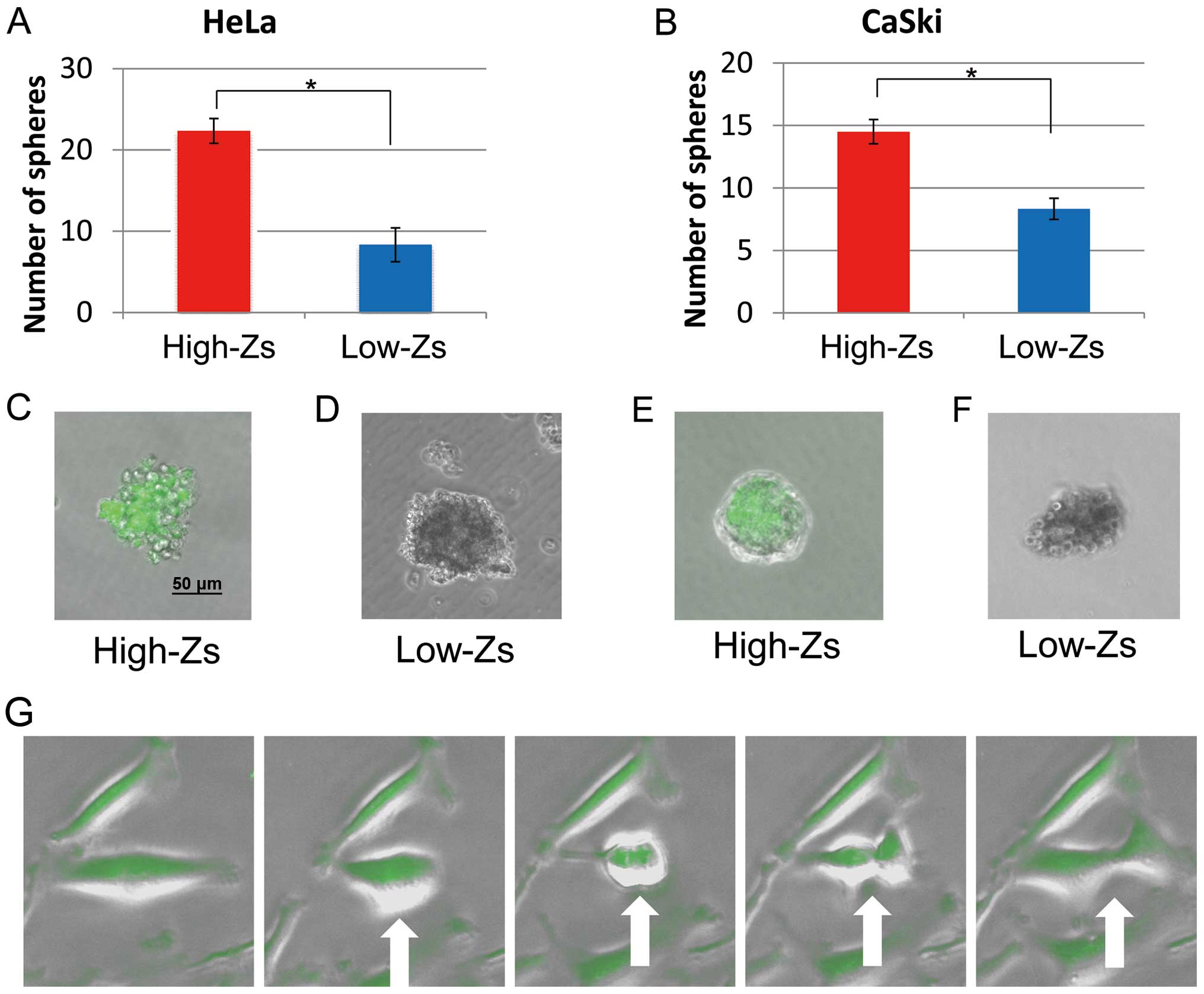Visualization and characterization of cancer stem-like cells in cervical cancer
- Authors:
- Published online on: September 24, 2014 https://doi.org/10.3892/ijo.2014.2670
- Pages: 2468-2474
Metrics: Total
Views: 0 (Spandidos Publications: | PMC Statistics: )
Total PDF Downloads: 0 (Spandidos Publications: | PMC Statistics: )
Abstract
Cancer stem cells (CSCs), defined by their differentiation capacity, self-renewal capacity, and maintenance of proliferation, have been identified in many tumors, including cervical cancer. Current studies identify CSCs by several specific biomarkers; however, it is difficult to monitor cervical CSCs in real-time in vitro and in vivo. Recent research reported the visualization of CSCs in breast cancer and gliomas using green fluorescent protein, ZsGreen, fused to a degron motif ornithine decarboxylase (ODC), which is destroyed by proteasomes. Accordingly, CSCs have low 26S proteasome activity, whereas non-CSCs have high 26S proteasome activity. Therefore, it is possible to observe CSCs by their accumulation of the fluorescent ZsGreen protein. In this study, we investigated optical imaging parameters to evaluate CSCs using two human cervical cancer cell lines: CaSki and HeLa. We defined populations as cell types having high- and low ZsGreen-cODC (high- and low-Zs, respectively) expression levels. The results of a sphere-forming assay revealed that the self-renewal ability of the high-Zs population was significantly higher than that of the low-Zs population. A tumorigenicity assay confirmed that the high-Zs population exhibited higher tumorigenic potential than the low-Zs population. The radioresistance of the high-Zs population of both HeLa and CaSki cells and the chemoresistance of the high-Zs population of CaSki cells were confirmed by a clonogenic survival assay and the tetrazolium dye assay, respectively. These results indicate that high-Zs populations of both the HeLa and CaSki cell lines possess CSC-like properties and therapeutic resistance. In conclusion, we successfully visualized CSC-like cells using a fluorescent protein system.
















